What are the best dogs for city living? Good candidates can’t be frequent, loud barkers that drive the neighbors mad. Additionally, they must be comfortable in smaller spaces and able to saunter through crowded city streets on a leash — or in a bag — without freaking out. So which breeds fit these needs? Let’s dive in.
#8 Best Dog for City Living: French Bulldog
- AKC Dog Personality Description for French Bulldog: Adaptable, Playful, Smart
- Average Height for French Bulldog: 11 to 13 inches
- Average Weight for French Bulldog: under 28 pounds
Nearly all Bulldog breeds do well in apartments, but French Bulldogs — with their signature bat ears — are especially suited to cities. Smaller than other Bulldogs, Frenchies don’t bark much and were bred for cafe life.
“Frenchies don’t bark much and were bred for cafe life.”
They shed profusely but have short hair. As such, weekly at-home grooming — with a medium-bristle brush, rubber grooming mitt, or hound glove — goes a long way in reducing the amount of hair that lands on your floors and furniture.
French Bulldogs: Bred for Cafes
French Bulldogs are well suited to cities because they don’t require tons of outdoor activity, and they’re at-home on busy sidewalks. Why are Frenchies so acclimated to hustle and bustle? The little bruisers were bred to be the lap dogs of 1800s Paris Cafe Society.
Click to read more about French Bulldogs, who like to go places with their humans.
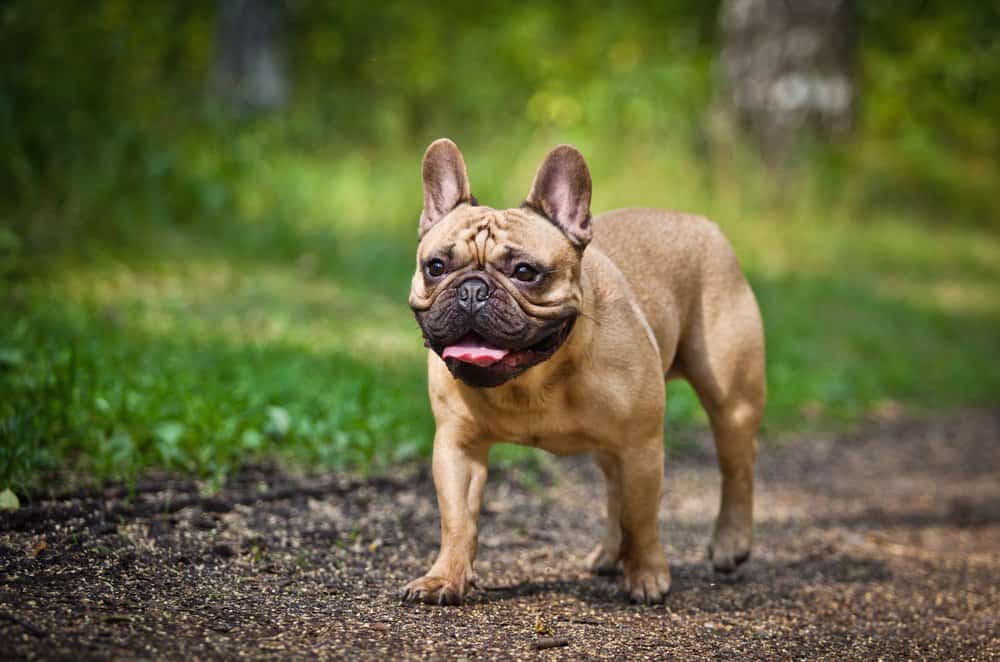
French bulldogs were bred to be lap dogs for the 1800s Paris Cafe Society.
©dezy/Shutterstock.com
#7 Best Dog for City Living: Japanese Chin
- AKC Dog Personality Description for Japanese Chin: Charming, Noble, Loving
- Average Height for Japanese Chin: 8 to 11 inches
- Average Weight for Japanese Chin: 7 to 11 pounds
Among the most regal of all dog breeds, Japanese Chins are the definition of “pampered pooch.” They’re tiny, they’re silky, and they ooze upper class. Japanese Chins are the breed of ersatz Italian aristocrats, Aspen housewives, and Upper East Side doyennes.
Considered a “feline” dog, Japanese Chins are amusingly independent, reserved, and love their particular humans. Basically, they’re the canine equivalent of your well-heeled friend with a talent for sophisticated snark. They’re comfortable and fun around you, but aren’t warm with everyone. Quiet and fastidious, Japanese Chins don’t bark much, and they’re fine with just a smidgen of light exercise at the home “gym.”
“Basically, they’re the canine equivalent of your well-heeled friend with a talent for sophisticated snark.”
To keep them looking presentable, brush weekly and bathe once a month. Also, their nails grow quickly and must be trimmed regularly.
Japanese Chin: Bred for Relaxed Royalty
Japanese Chin dogs were specifically bred as lap dogs for Japanese nobles — and they’re perfectly comfortable reigning over a city apartment.
Click to read more about Japanese Chin, who love to sit on the couch and stream movies with their humans.
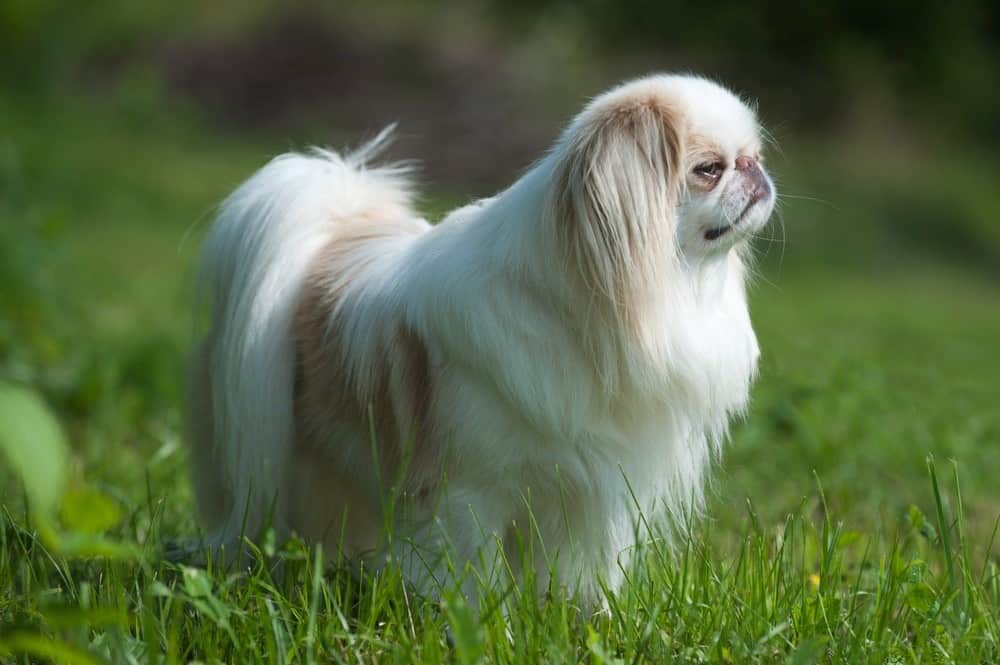
Japanese Chin dogs were specifically bred as lap dogs for Japanese nobles.
©KaliAntye/Shutterstock.com
#6 Best Dog for City Living: Pug
- AKC Dog Personality Description for Pug: Charming, Mischievous, Loving
- Average Height for Pug: 10 to 13 inches
- Average Weight for Pug: 14 to 18 pounds
Pugs are beloved the world over. Their smooshy faces and endearing waddles get us right in the “awws.” Besides, who doesn’t appreciate a pup that’s full of love and a bit mischievous!?
Sure, pugs may have frequent gas that can, shall we say, ignite a room. But they’re also highly adaptable, love to please, and aren’t big on barking. Besides, owners usually solve the gas issue with a food-brand change.
“Pugs are highly adaptable, love to please, and aren’t big on barking.”
But caveat emptor: stoic, unemotional folks may want to consider other breeds. Though Pugs may look like fearless fighters, their feelings are easily hurt, and like toddlers, sadness registers on their faces immediately. Additionally, hot and humid areas are no good for Pugs — so Florida folks, and people in similar climates, should look elsewhere.
Pugs are relatively easy to groom. A weekly brushing of their short, smooth coats, with a rubber grooming mitt, hound glove, or medium-bristle brush, will keep your pooch in tip-top shape.
Royal Dogs with a Latin Motto
Pugs came onto the canine scene thousands of years ago as companions to Chinese emperors. Holland’s royal House of Orange also took a liking to them. It’s also one of the few breeds with a Latin motto: multum in parvo — a lot in a little.
Click to read more about pugs, who have huge personalities.
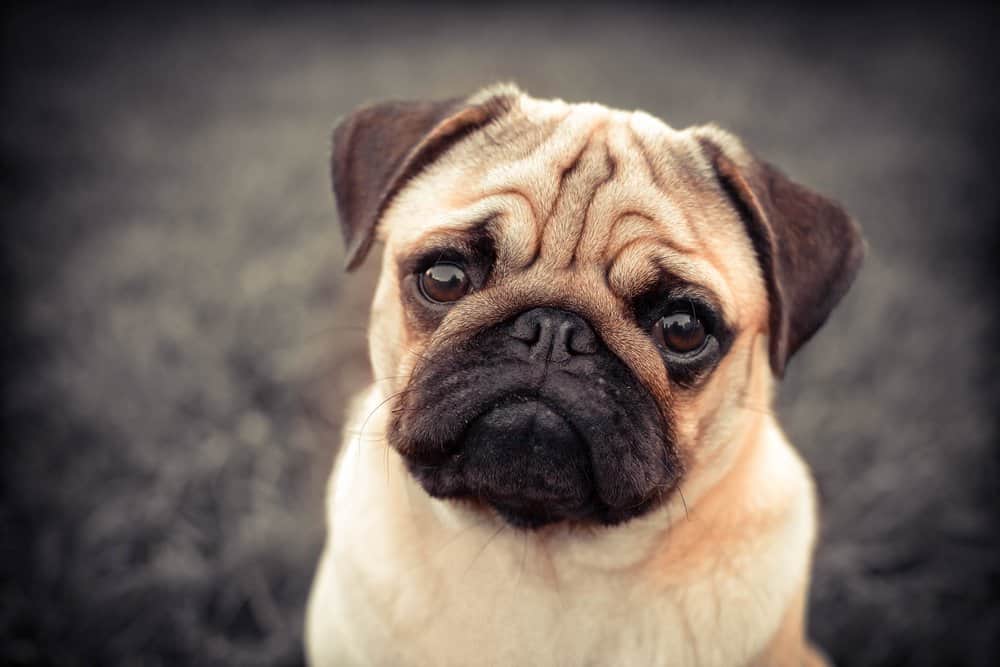
Pugs have human-like expressions when their feelings are hurt.
©Nature Art/Shutterstock.com
#5 Best Dog for City Living: Russian Tsvetnaya Bolonka
- AKC Dog Personality Description for Russian Tsvetnaya Bolonka: Playful, Charming, Inquisitive
- Average Height for Russian Tsvetnaya Bolonka: 9 to 10 inches
- Average Weight for Russian Tsvetnaya Bolonka: 4.5 to 11 pounds
Called Bolonkas for short, Russian Tsvetnaya Bolonkas are tri-colored lap dogs bred specifically for apartment-dwelling. Hypoallergenic and incredibly sweet to their masters, Bolonkas are calm as monks and more loyal than nuns — but aren’t too fond of other animals. And while they don’t bark much, Bolonkas will alert to unexpected visitors.
“Bolonkas are calm as monks and more loyal than nuns — but aren’t too fond of other animals.”
Bolonkas shed infrequently but need pampering! Their loose, curly hair needs brushings with a wide-tooth-comb every other day to avoid matting. Daily face washings are also a must.
Bolonkas: Another Noble Lap Dog
Bolonkas date back to the 1700s when King Louis IV of France presented a new type of lap dog, now thought to be a Bolonka, to members of the Russian nobility. These dogs were mostly kept by the wealthy, as Russia was known for its working dogs. However, when the cost of living and apartment rent prices skyrocketed in the 1960’s, people abandoned the larger breeds, and Bolonkas rose in popularity.
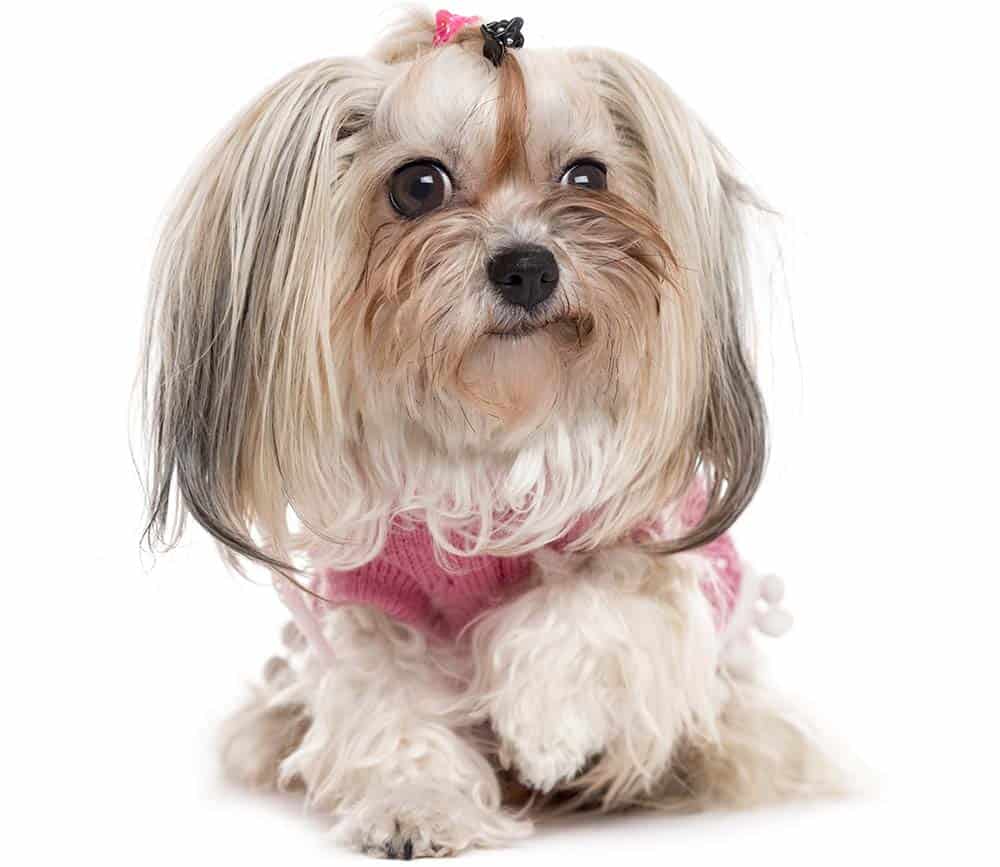
Called Bolonkas for short, Russian Tsvetnaya Bolonkas are tri-colored lap dogs bred specifically for apartment living.
©iStock.com/GlobalP
#4 Best Dog for City Living: Border Terrier
- AKC Dog Personality Description for Border Terrier: Affectionate, Happy, Plucky
- Average Height for Border Terrier: 12 to 15 inches
- Average Weight for Border Terrier: 11 to 15.5 pounds
According to the breed’s parent club:
“A Border was bred to think for himself, which can be both his most endearing and most frustrating quality. Told to stay, he will oblige for what he considers enough time, then slip off about his own business. Confronted, he will act sorry, since he really likes to please. Punish him harshly, and you will break his spirit. If you want a dog that is unfailingly obedient, don’t get a Border Terrier.”
Border Terriers are a great city dog for people who want no part of daintiness. Tough but affectionate, independent but trainable, Border Terriers can handle crowds, and they do well in urban settings.
That said, Border Terriers need at least two brisk walks a day — and time at the doggie park is always welcome. Never leave the house without a leash, though, because Border Terriers are born chasers! But their instincts come in handy when mice stumble into the apartment.
Fair warning: things can get a little hectic if there’s also a feline at home. Kitties and the Border Terriers usually get along like the Hatfields and McCoys.
In terms of grooming, Border Terriers are no fuss. Their wiry, double-layer coats are weather resistant and only require a quick weekly brushing. Nor do they need many baths. About four or five a year should suffice.
Border Terriers: Born to Dig
Originally bred as outdoor hunting-companions for the Scottish-English border, they’re hearty, fast, strong, and can dig better than a Fiskar gardening shovel.
Click to learn more about Border Terriers, who adopt their humans’ activity levels.
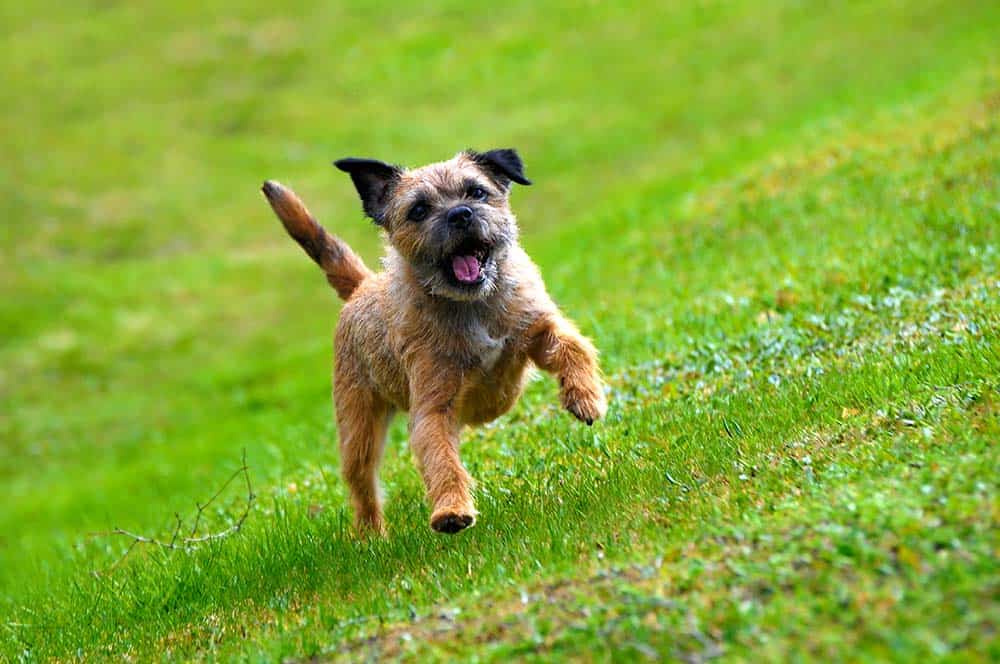
Border terriers love to dig and adjust well to city living.
©Andreas Gradin/Shutterstock.com
#3 Best Dog for City Living: Teddy Roosevelt Terrier
- AKC Dog Personality Description: Playful, Versatile, Intelligent
- Average Height for Teddy Roosevelt Terrier: 8 to 15 Inches
- Average Weight for Teddy Roosevelt Terrier: 8 to 25 Pounds
What city-friendly dog breed has giant ears that stand at attention and love to play? Teddy Roosevelt Terriers, the naturally obedient, low-shedding, cat-friendly, easy-to-groom canine!
The small terriers do well in crowded metropolitan environments because they’re sociable, can be crate trained, and are eager to please their masters’ every whim. Plus, they’re a snap to maintain. Weekly brushings with a rubber curry mitt or soft brush does the trick. Also check their ears regularly for wax buildup, which can invite infection.
“TRTs are one-person dogs that may not take kindly to someone else moving in down the road.”
But before you fall in love with a Teddy Roosevelt Terrier, beware of a few things. For starters, they’re one-person dogs that may not take kindly to someone else moving in. Secondly, they’re energetic — very energetic. If you can’t make time for several walks a day or near-daily play dates at the dog park, look for another breed.
Teddy Roosevelt Terriers: Mousers Extraordinaire
Another reason Teddy Roosevelt Terriers make the best city dogs is because they’re amazing mousers — on the level of cats! If a rodent finds its way into your apartment, it won’t take long for Teddy to hunt it out.
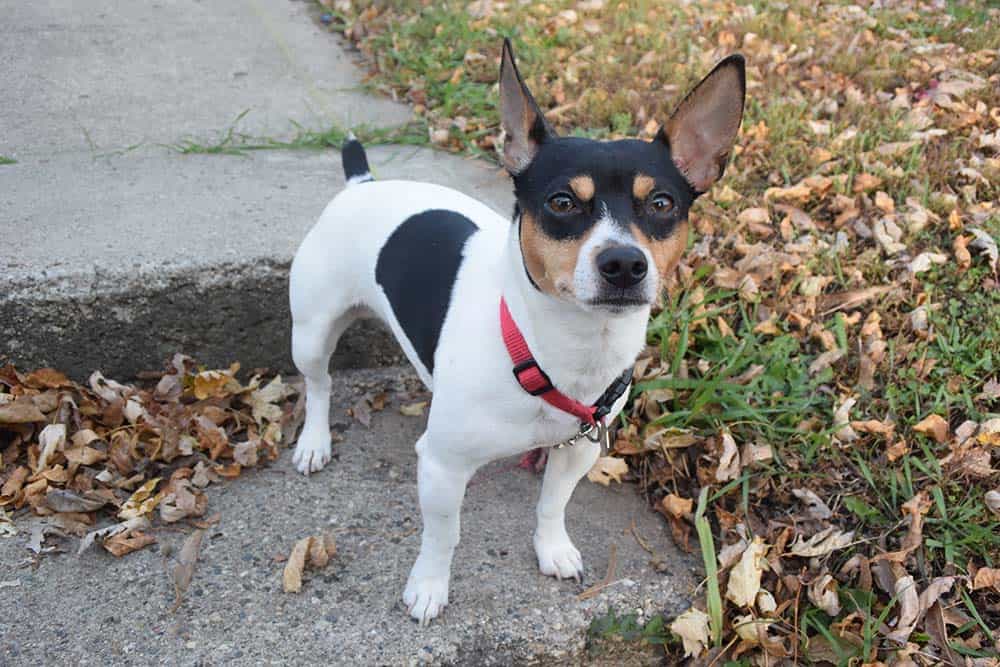
Teddy Roosevelt terriers are excellent mouse-catchers.
©Michele M Vogel/Shutterstock.com
#2 Best Dog for City Living: Havanese
- AKC Dog Personality Description for Havanese: Intelligent, Outgoing, Funny
- Average Height for Havanese: 8.5 to 11.5 inches
- Average Weight for Havanese: 14 to16 years
Also known as Havana Silk Dogs and Spanish Silk Poodles, Havaneses are the only breed native to Cuba, and these days they’re a popular dog for city dwellers. The small- to medium-sized pups are cheerful extroverts that come in a variety of colors and keep barking to a minimum.
“Havaneses hate to be left alone for hours on end and will take out their frustration on the furniture.”
Unusually for dogs, you can style their hair in several ways, including puli or super-short curls. Their coif will dictate grooming needs. As for exercise, a brisk daily walk and 15-minute apartment play session keeps them happy and healthy. Also check their ears and outer eyes regularly for buildup.
If you’re at work all day, a Havanese may not be a great fit. They hate to be left alone for hours on end and will take out frustrations on the furniture.
Cuba’s Only Dog Breed
The Havanese is Cuba’s only native dog breed. Originally, they were popular among the island country’s aristocrats and wealthy planters.
Click to learn about Havaneses, which are in the Bichon class.
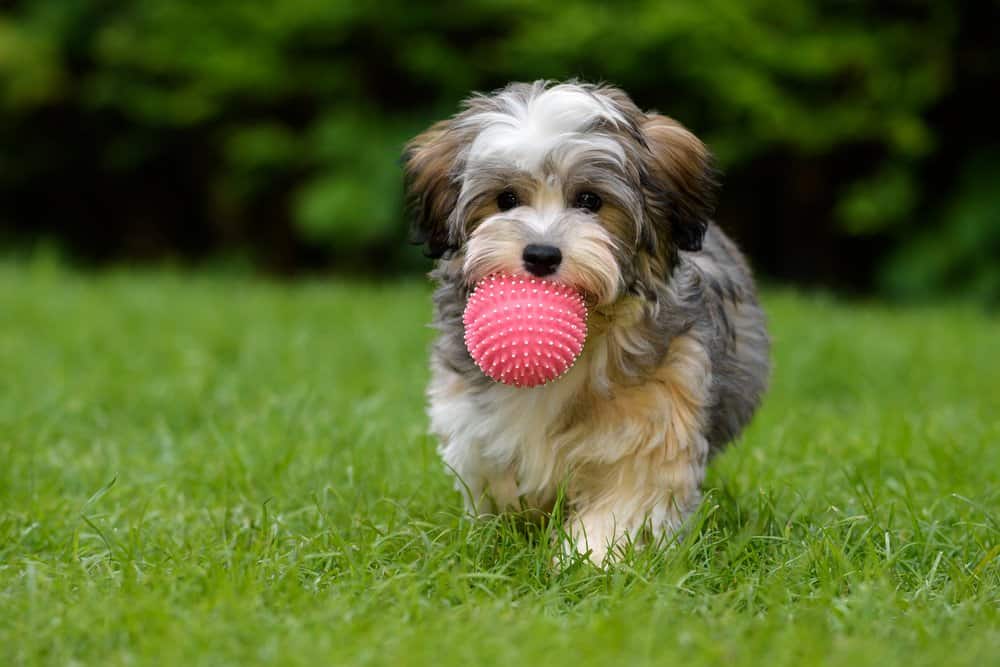
Originally popular among the Cuba’s aristocrats and wealthy planters, the Havenese is the country’s only native dog breed.
©Dorottya Mathe/Shutterstock.com
#1 Best Dog for City Living: Keeshond
- AKC Dog Personality Description for Keeshond: Friendly, Lively, Outgoing
- Average Height for Keeshond: 17 to 18 inches
- Average Weight for Keeshond: 35 to 45 pounds
The Keeshond — pronounced “Kayz-hawnd” — is a great medium-sized dog for city living that’s perfectly happy in small spaces, a remnant of their days living on Dutch canal barges.
Keeshond have fox-like faces, fluffy coats, and a coloration pattern that looks like permanent eyeglasses.
To keep shedding minimal, Keeshonds need a weekly grooming with a pin brush. Baths and blow-drys every four to six weeks is standard for the breed.
In terms of exercise, Keeshonds enjoy lots of doggie park time and long city walks. They also love to curl up on the couch at night to hang with their humans. Great therapy dogs, Keeshonds are smart, sensitive, and very trainable. They’re also the breed to beat in obedience contests.
Keeshonds: The Bald Eagle of Holland
Americans revere bald eagles as a symbol of national pride. That’s how the Dutch see Keeshonds. Known as the “people’s dog,” a Keeshond was the 18th-century Dutch Patriot Party mascot and remains beloved in the country to this day.

Known as the “people’s dog,” a Keeshond was the 18th-century Dutch Patriot Party mascot.
©Olga Aniven/Shutterstock.com
Summary
Let’s look back at the dogs that made the cut for the best city dwellers:
| Rank | Dog Breed |
|---|---|
| 1 | Keeshond |
| 2 | Havanese |
| 3 | Teddy Roosevelt Terrier |
| 4 | Border Terrier |
| 5 | Russian Tsvetnaya Bolonka |
| 6 | Pug |
| 7 | Japanese Chin |
| 8 | French Bulldog |
Up Next…
- The 10 Best Apartment Animals Are you considering the best pet to cohabitate with you in an apartment? Here’s a guide to the best pets for apartment living.
- 9 Yellow Cat Breeds & Yellow Cat Names There’s a variety of yellow cat breeds out there. Learn what they are in this interesting article.
- The 10 Most Expensive Dog Breeds If you’re looking to splurge on a dog, here’s a look at 10 dog breeds that will break the bank.
The photo featured at the top of this post is © Olga Aniven/Shutterstock.com
Ready to discover the top 10 cutest dog breeds in the entire world?
How about the fastest dogs, the largest dogs and those that are -- quite frankly -- just the kindest dogs on the planet? Each day, AZ Animals sends out lists just like this to our thousands of email subscribers. And the best part? It's FREE. Join today by entering your email below.
Thank you for reading! Have some feedback for us? Contact the AZ Animals editorial team.






